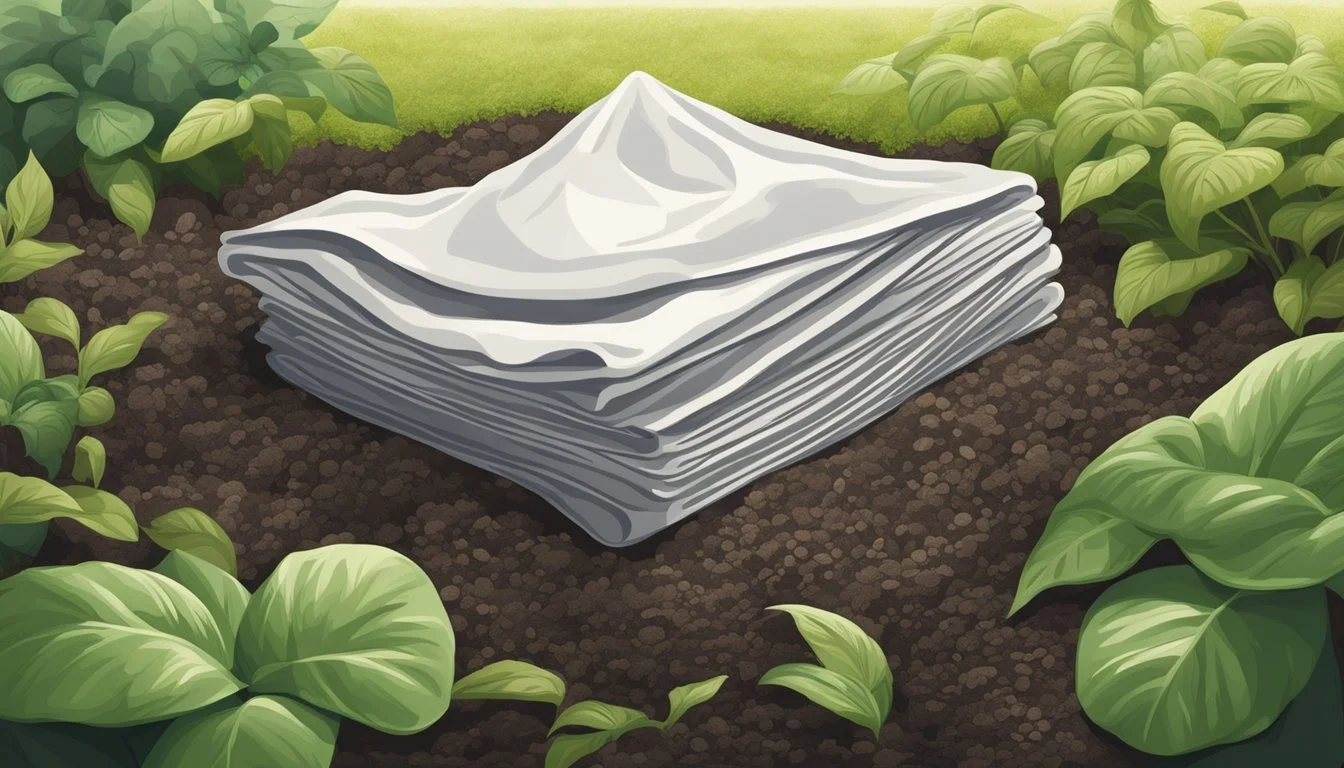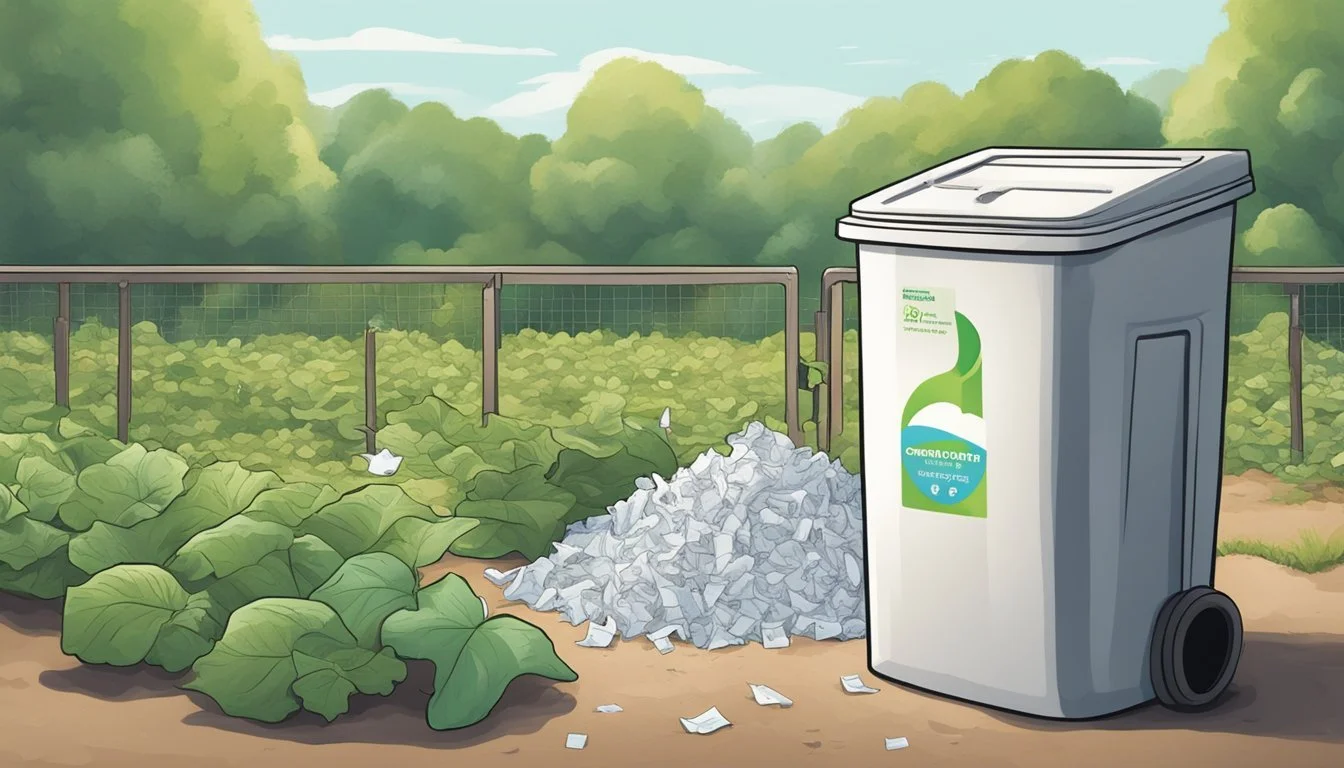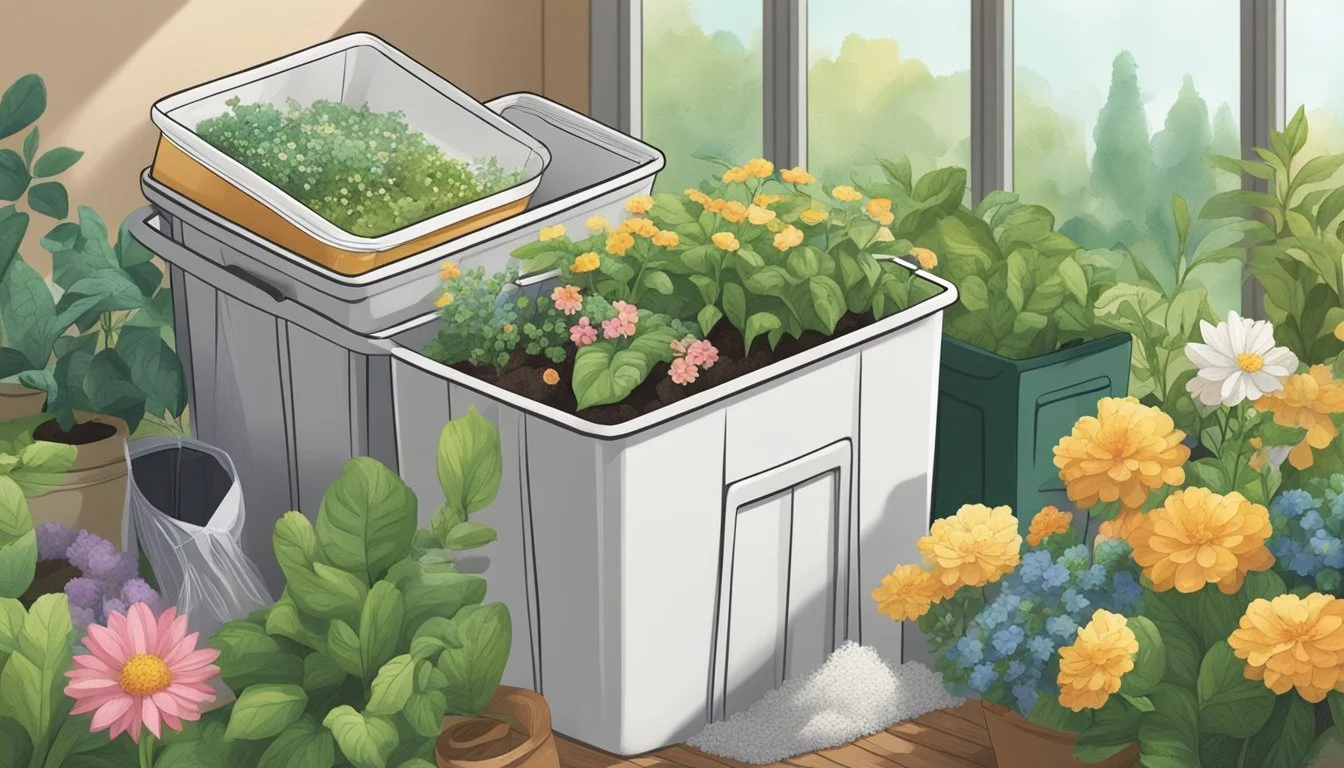Can You Compost Fabric Softener Sheets?
Debunking Myths and Providing Facts
Fabric softener sheets have become a staple in many households, offering a convenient solution to static cling while leaving clothes feeling soft and smelling fresh. However, as environmental awareness grows, consumers are becoming more conscientious about the products they use and their long-term impact on the planet. This has brought into question the eco-friendliness of these sheets, particularly concerning their disposal through composting.
Composting is a method of converting organic waste into nutrient-rich soil amendments, a process that benefits both gardens and the environment by reducing landfill waste. Unfortunately, the majority of fabric softener sheets are not suitable for composting. They are often made from synthetic materials that do not biodegrade within a compost system. Moreover, the chemicals and fragrances that fabric softener sheets contain can be harmful to the microorganisms essential for the composting process.
For those seeking eco-friendly alternatives, some options do exist. Reusable dryer balls and naturally scented sachets can provide similar benefits without the environmental drawbacks. These alternatives not only reduce waste but also offer a compost-friendly solution, aligning with a more sustainable approach to laundry care.
Understanding Fabric Softener Sheets
Before diving into the specifics, it's important to recognize that fabric softener sheets are designed to enhance the laundry experience by reducing static and adding fragrance, but their chemical makeup raises environmental and health concerns.
Composition and Chemical Ingredients
Fabric softener sheets are typically made from thin layers of polyester or paper saturated with softening agents and fragrance. These softening agents often consist of quaternary ammonium compounds, known as quats. Commonly, a variety of chemicals, such as phthalates, preservatives, and artificial colors, are added to provide scent and color. Volatile organic compounds (VOCs), which can evaporate into the air, are also found in some dryer sheets, as well as synthetic fragrances, which can linger on clothing and fabrics.
Chemicals: Quaternary ammonium compounds, phthalates, VOCs, preservatives, artificial colors, synthetic fragrances.
Purpose: To reduce static, soften fabric, and add fragrance.
Intended Use and Benefits
Fabric softener sheets are used in the drying process to reduce static cling, soften fabrics, and impart a pleasant odor. By coating fibers with a thin layer of fabric softening agents, these sheets help to smooth out wrinkles and control static electricity in garments. The convenience and sensory enhancements provided by fabric softener sheets – including an appealing scent and touch – contribute to their popularity.
Benefits: Reduce static, control odors, smooth wrinkles.
Usage: Added to dryer with clothes.
Common Issues with Fabric Softener Sheets
While fabric softener sheets offer several benefits, they also pose problems. The chemicals used in many brands can be toxic, and can contribute to waste. They may cause skin irritation or respiratory issues for those with sensitive skin or conditions such as asthma. Environmental impact is another concern, as synthetic chemicals in the sheets can contribute to water and soil pollution when the waste is not properly managed. Additionally, since most dryer sheets are single-use, they generate considerable waste.
Health Concerns: Skin irritation, respiratory issues.
Environmental Impact: Waste, potential pollution, water and soil contamination.
Environmental Impact of Fabric Softener Sheets
Fabric softener sheets, widely used in laundry routines for their convenience and fragrance, pose significant environmental concerns ranging from compostability issues to their contribution to pollution.
Biodegradability and Compostability
Fabric softener sheets are often made from nonwoven, synthetic materials like polyester, which are not biodegradable. These materials prevent the sheets from breaking down naturally in soil, making them unfit for composting. As the Environmental Working Group highlights, the inclusion of synthetic fragrances and chemical ingredients further complicates the degradation process. These substances can linger in the environment, harming soil health and contributing to the buildup of waste.
Pollution and Waste Management
In waste management, fabric softener sheets mostly end up in landfills where they accumulate and persist due to their non-biodegradable nature. Additionally, the chemicals used in these sheets may leach into the ground, potentially contaminating water sources. The production and disposal of these products contribute to air and water pollution, with the chemical-laden lint produced during drying being a source of concern. This lint, often containing microplastics, can escape into waterways and contribute to the growing problem of plastic pollution.
Effects on Wildlife and Ecosystems
When fabric softener sheets reach natural habitats, they pose risks to wildlife. The ingestion of microplastics and other synthetic materials from degraded sheets can be harmful to animals, leading to digestive and reproductive issues. Additionally, the chemicals may have long-term, detrimental effects on ecosystems. For instance, the presence of these substances in water can disrupt the delicate balance necessary for aquatic life, possibly leading to a decline in biodiversity.
In considering these environmental concerns, it is evident that fabric softener sheets present several ecological challenges that must be addressed through improved waste management and the development of eco-friendly alternatives.
Composting Fabric Softener Sheets
Fabric softener sheets are commonly used in laundry routines, but their compostability is a topic of concern for environmentally conscious consumers.
Eligibility for Composting
Traditional fabric softener sheets often contain synthetic materials that are not suitable for composting. These sheets will not break down effectively in a compost pile and can introduce harmful chemicals into the soil. It's important for individuals to seek out sheets specifically labeled as compostable if they wish to include them in their compost bin.
Alternatives to Fabric Softener Sheets
Consumers seeking sustainable alternatives to traditional fabric softener sheets have various options:
Eco-friendly fabric softeners: Some brands offer fabric softeners made with biodegradable ingredients, which are a more suitable option for composting.
Reusable dryer balls: Wool dryer balls are a sustainable option that can replace disposable sheets. They are effective in softening fabric and can be used for up to a thousand loads.
Natural fibers: Using laundry detergents that are designed to work with natural fibers can reduce the need for fabric softening products.
Guidelines for Eco-Conscious Disposal
For those who opt to use traditional fabric softener sheets, proper disposal is key:
Recycle: If the sheets are not compostable, recycling is a preferable alternative when available.
Trash: In scenarios where the used sheets are neither compostable nor recyclable, the only remaining option is to dispose of them in the trash. It's best to limit this last resort and choose more eco-friendly products whenever possible.
Eco-Friendly Substitutes and Practices
The transition to eco-friendly laundry practices includes the use of natural softeners and additives that not only ensure safety and non-toxicity but also enhance the cleaning process. These alternatives also contribute to reduced drying time and provide pleasant, natural scents without the use of harmful chemicals.
Reusable Dryer Alternatives
Wool dryer balls are a prominent reusable option that can replace fabric softener sheets in the drying cycle. Made from natural materials like wool, they effectively separate laundry, allowing hot air to circulate more efficiently and thus shorten drying time. This not only conserves energy but can also minimize the static cling in fabrics.
Material: Natural wool
Reusable: Yes
Benefits: Shortens drying time, reduces static cling
Natural Softeners and Additives
For a natural approach, distilled white vinegar acts as an excellent fabric softener when added to the washing machine during the rinse cycle. It can help to remove detergent residue and soften clothes without leaving any lingering scent. Additionally, baking soda can be used to both clean clothes and soften water, enhancing the effectiveness of detergents.
Adding a few drops of essential oils like citrus or lavender to vinegar or baking soda provides clothes with a fresh, natural aroma.
Distilled white vinegar: Removes residue, softens clothes
Baking soda: Cleans, softens water
Essential oils: Adds natural scent
Tips for Incorporating into Laundry Routine
Integrating these eco-friendly practices into one's laundry routine can start with small steps. For instance, one could begin by replacing conventional dryer sheets with bamboo dryer sheets, which are made from a sustainable natural resource and are often reusable. Additionally:
Pour 1/2 cup of vinegar into the rinse compartment for fabric softening.
Place 3-4 wool dryer balls into the dryer to reduce drying time and static.
Sprinkle 1/4 cup baking soda into the washing machine to boost detergent cleaning power.
These practices not only contribute to a safer and greener home environment but also turn routine laundry into a more responsible task benefiting the planet.
Additional Considerations for Domestic Use
When assessing the use of fabric softener sheets for composting in a domestic setting, it's important to weigh health-related issues, financial implications, and dispel common misconceptions.
Health Concerns and Skin Safety
The materials and chemicals used in fabric softener sheets may cause skin irritation, especially for those with sensitive skin. It is advised to opt for hypoallergenic sheets designed to minimize the risk of skin irritations. Households should verify the safety of the sheets' chemical contents, as direct skin contact post-composting might occur.
Financial and Efficiency Benefits
From an economical standpoint, using fabric softener sheets that are cost-effective and can reduce drying time offers value. These sheets also help to reduce static in clothes, making them efficiency enhancers in the laundry process. However, for composting purposes, one should evaluate the cost-benefit of biodegradable or compostable alternatives.
Myth Busting and FAQs
One common eco myth is that all fabric softener sheets are compostable; this is not always true. The compostability largely depends on the materials used in the sheets. Sheets that are not clearly marked as biodegradable can contain synthetic fibers and chemicals that are harmful to the compost ecosystem.
Hard Water: Some believe sheets soften water; in fact, they don't affect hard water conditions.
Flame Resistance: There is no evidence that they reduce flame resistance of fabrics.
Safety: Always research and follow manufacturer guidelines to ensure safety when using these products in any capacity, whether for laundry or composting.
Creative Reuse and Repurposing Ideas
Spent fabric softener sheets need not be discarded immediately after their initial use in the laundry cycle. Instead, they can serve alternative purposes with a bit of creativity.
Repurposing Spent Fabric Softener Sheets
Cleaning: Used fabric softener sheets can be effective in dusting. Their anti-static properties help pick up dust and pet hair from surfaces. This means they can be used to clean television screens, computer monitors, and other electronics, as well as blinds and baseboards.
Deodorizer: Fabric softener sheets can absorb odors and leave a fresh scent. They can be tucked into gym bags, shoes, or drawers to combat unpleasant smells. Placing them under sofa cushions or in a vacuum cleaner bag can also freshen the air in a room.







